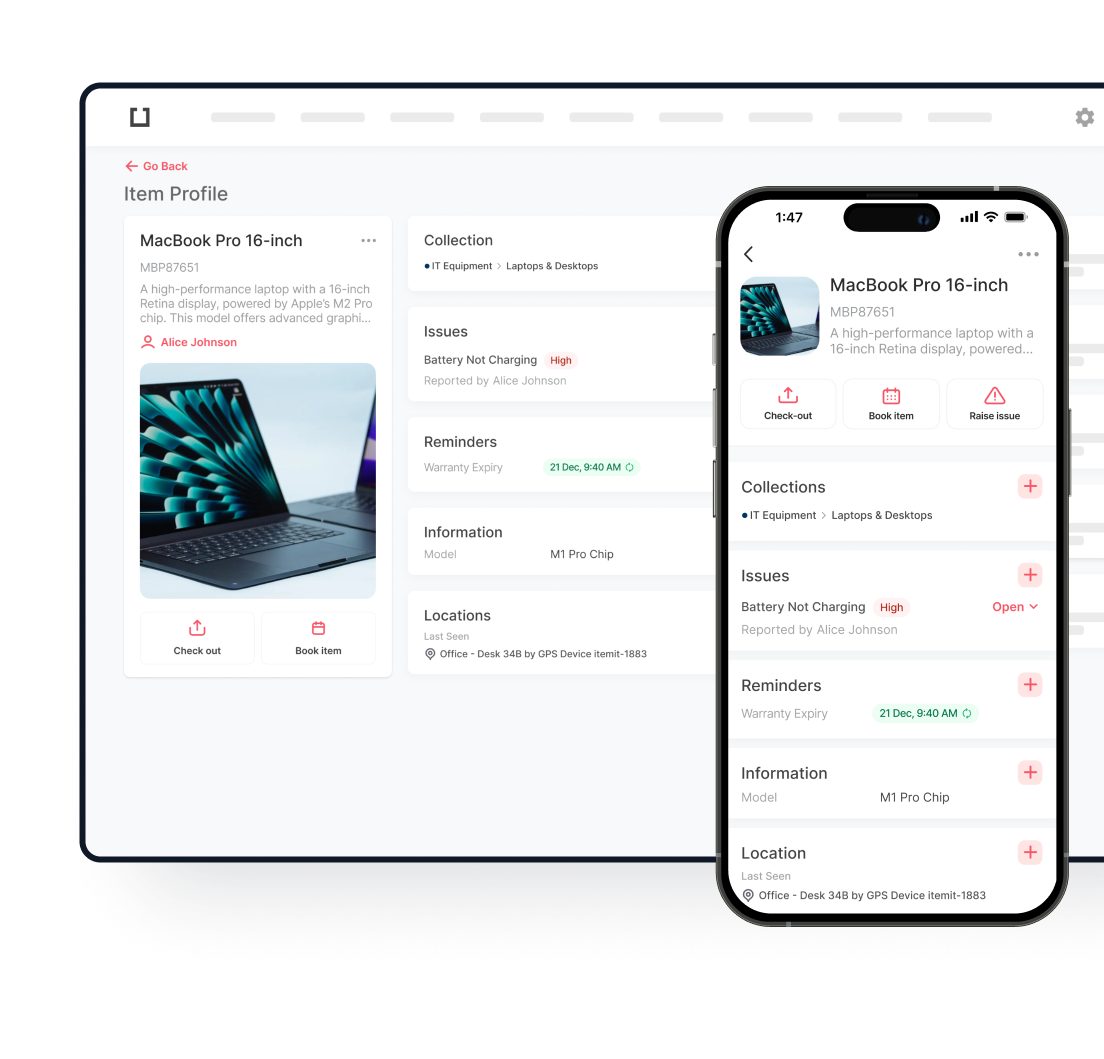
Leave Spreadsheets in the Past
How spreadsheets can hold back your asset tracking
Spreadsheets are limited.
There’s a lot more to it than this, but when it comes to simple asset management solutions, spreadsheets are hardly usable.
Whether you’re trying to create a fixed asset register, or if you’re trying to implement simple asset tracking, spreadsheets, or Excel, is not the direction you should be going in.
Spreadsheets have limited asset management features, much less than even the most simple asset management software. In what ways? Find out below with eleven reasons why spreadsheets are less effective than free asset tracking software, such as itemit..
1. Spreadsheets are difficult to maintain on-the-go
To get the most out of a spreadsheet, something is needed: a desktop or a laptop.
Imagine if you’re onsite, how difficult it would be to fetch your spreadsheets up on your phone for some property management.
Small boxes. Difficult to type in. Difficult to see.
Yet we’ll all have a smartphone stashed somewhere. Needing to update assets onsite makes everything a lot easier too, rather than noting down the necessary changes and bringing them to a computer.
With an asset management app, this isn’t even a problem. Simply open the app and update at will onsite.
2. Asset records aren’t linked to the physical assets
This creates an instant difficulty.
Imagine your fixed asset register on a spreadsheet, “CCTV cameras: x3”. Which is which?
You can add serial numbers, you can add columns and columns and rows and rows on your spreadsheet, you can take up an incredible amount of time trying to distinguish multiple identical assets.
Or, you can use asset management software.
With itemit, you can instantly add photographs, a unique serial number is created just for that singular asset, and you can even use unique asset tags.
Stick your asset tags onto your assets, whether they’re QR asset tags or RFID tags, then you simply need to scan them into your asset management system with your smartphone or an RFID reader.
How much do RFID asset tags cost? The answer is: it depends on size, use, read range, etc. You can find out more here.
3. It’s difficult for multiple users to access and contribute to a spreadsheet
This is a common office problem: Too many people on the same spreadsheet.
Even if the changes are being tracked, multiple users editing your sheets gets messy, confusing, and chaotic. Then there’s the risk of accidental deletion!
For example, what if two people are trying to update an asset simultaneously? What you get is a conflict of interests and a waste of time. With asset inventory management, the process is streamlined.
4. Multiple spreadsheets? No easy solution!
Creative asset management software means that you no longer need multiple spreadsheets.
There might be one spreadsheet with absolutely everything on it, there might be one with pages and pages of assets or information, or there might be multiple, all linked together and then linked to maintenance records, photos, user manuals. How is this efficient?
With asset register software, everything can be organised and in the right place. Easy.
5. No confidence when handing records over to other stakeholders
Imagine if instead of exchanging email after email to delay having to show your asset records, you could just open your phone and share with ease and comfort?
Sharing your asset records can be a real problem… If you’re using spreadsheets. If there are incomplete, inaccessible, or inaccurate records on your spreadsheets it might not be easy to just hand them over to a customer or stakeholder. If you’re using asset management software tools, however, then this becomes easy.
Save yourself the stress. Use asset management software!
6. Asset records are not updated instantly. Errors or outdated information are possible!
A big time-waster and a big potential for errors is that if you’re using a spreadsheet, maintenance teams will update asset records when they return to base.
How is this practical? Information might be lost, especially if it’s noted down either on a phone or on a notepad.
Use asset maintenance management software and update your assets instantly. No more wasted time and no more errors.
7. No real time view of assets and their status
Spreadsheets aren’t live.
How can you know the asset data is valuable, effective, accurate, and up to date? Time without updates increases the chance of errors.
With even the most simple, free asset management software you can update your assets and view them in real time. You can see where the locations are and when maintenance is scheduled.
8. Only one-way communication
This builds on the previous points. With spreadsheets you’re not communicating with your assets.
Your assets can’t send you automatic emails when maintenance is needed, they can’t tell you when they’re lost, they can’t tell you who was using them last. All the information on a spreadsheet is added by the user.
With asset management software, however, your assets can communicate with you in a proactive and productive way.
9. No accountability. Who changed what and when? Who knows!
When there are lots of users adding a lot of data it’s almost impossible to keep track of who put what and where.
There’s no accountability of who has created an error on the sheet which makes it much more difficult and time consuming to rectify.
As well as this, if an asset is lost it’ll take a lot longer to track with a spreadsheet. If you know who misplaced the asset with a more functional asset management system, you can find it a lot more quickly.
If every interaction is recorded, like it can be with asset tracking software, an audit trail is created and there is accountability.
10. No attachment features!
It’s possible to add pages and pages to spreadsheets involving external links to attempt to make it easier to attach relevant information and vital documents.
With an asset management app, however, it’s possible to simply attach records such as user manuals, photos, inspection sheets, receipts, warranties with ease.
That’s all there is to it, it’s really that simple!
11. Excel wasn’t designed for asset management!
This is the simplest and most compelling reason you should stop using spreadsheets for asset management. They weren’t built for it!
Excel is for analysis. It is not for tracking and maintaining assets.
There are no features in spreadsheets that can help you manage your assets, meaning that you have to create all the information yourself and add it. This means there might be features and capabilities you’re missing out on!
Not only this, but there’s the problem of smartphones as well. Excel was built for office use and not for on-the-go asset updating or management on your phone.
Asset management apps, however, are built for on-the-go usage!
Asset management software is the solution!
Hopefully by now the limitations of using spreadsheets to manage your assets is clear. From how you add the information to how limited the information is.
Luckily, there is an inexpensive asset tracking solution: itemit!
Find out more about who we are: here, and if you sign up for a free trial below, you can even receive free QR tags to see for yourself!

Try itemit
Choose a better way to track
your assets.
Start your free 14-day trial now!
Want to track your assets better?
Start your free 14-day trial now
Instant access. No credit card details required.

Keep Learning
itemit Blog
Tips, guides, industry best practices, and news.
Why Your Library Needs Asset Tracking Software
Your library needs a tracking system so you know where your inventory is all of the time. Discover why an RFID asset tracking system is ideal!
How To Switch To Asset Tracking Software
Have more than a few assets and want to have more control over them? Read this post to find out how asset tracking software can help!
Tool Maintenance Made Easy
Would you like to keep your tools in a better condition? read this post now to find out how using pre-emptive maintenance can help!

